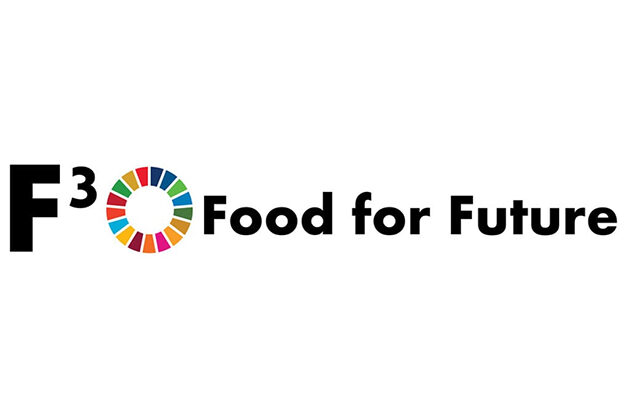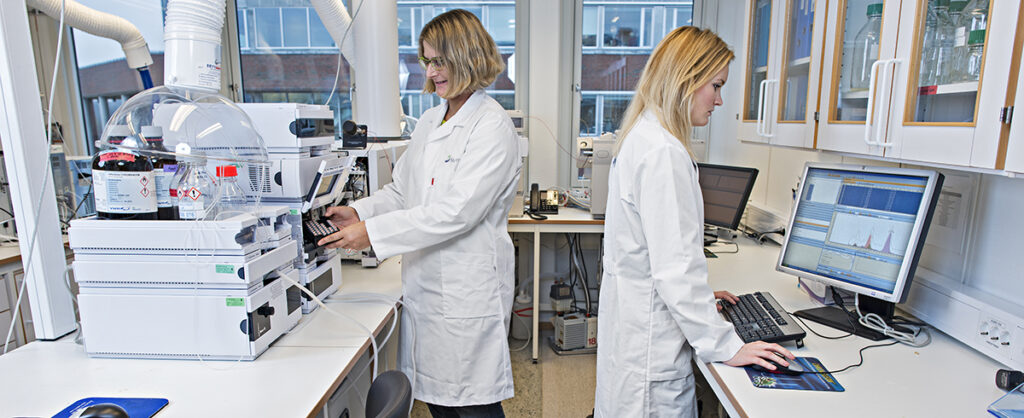FoodForFuture
Innovation, consumer insight and processing knowledge for sustainability and health

The main objective of this research program is to contribute to research-driven innovation in the Norwegian food industry in line with the UN Sustainable Development Goals through understanding innovation processes, consumers, and product and process interactions.
Start
01. Jan 2021
End
31. Dec 2024
Funded by
The Fund for Research Fees for Agricultural Products (FFL)
Project Manager(s):
Antje Gonera
Paula Varela-Tomasco
Laura Carraresi
Anne Rieder
Simon Ballance
Other Participants:
Valérie Lengard Almli
Stine Alm Hersleth
Sveinung Grimsby
Mads Erling Pedersen
Mari Øvrum Gaarder
Anne Rieder
Ann Katrin Holtekjølen
Anne Mari Tveit
Astrid Nilsson
Cecilia Midtsund Kippe
Dejan Knezevic
Dimitrios Tzimorotas
Elin Merete Wetterhus
Erik Tengstrand
Gard Wigdahl Karlsnes
Grethe Iren Andersen Borge
Ingunn Berget
Ida Rud
Ida Synnøve Bårvåg Grini
Josefine Skaret
Kristine Myhrer Svartebekk
Kjersti Aaby
Lene Øverby
Mats Carlehøg
Øydis Ueland
Paula Varela-Tomasco
Ragnhild Eg
Rune Rødbotten
Simon Ballance
Sidsel Fiskaa Hagen
Shiori Koga
Silje Kristine Bergum
Silje Johansen
Svein Halvor Knutsen
Tom Christen Johannessen
Tzvetelin Teodossiev Dessev
Vibeke Høst
Some results
Secondary objectives:
- Understand and foster innovation in the Norwegian food industry at the corporate and system level and strengthen research-driven innovation
- Increase knowledge about consumer behavior, eating experience and sensory perception and involve consumers in research and innovation
- Increase knowledge of and apply food technology to improve taste, texture, nutrition and bioavailability, health effects and sustainability of different product groups
- Increase value creation and sustainability through optimal utilization of Norwegian food raw materials
Results so far
Sustainable Food Innovation
On one side, we analyze how firms can be more innovative, and on the other side how we can bridge the gap between research and industry. At firm level, we consider both large and small firms. A survey with large firms aims at understanding how complying with sustainability standards represent an innovation driver. Preliminary results reveal that despite being aware about sustainability needs, firms relate this need only to energy and CO2 emissions. However, we also saw new open areas of research (e.g. plant-based alternatives) and increasing R&D collaborations, showing that sustainability and innovation are supporting each other.
We are also working on understanding entrepreneurial orientation, and innovativeness of local small food producers. On one side, we assessed their ability to learn from the experience of participating to a food contest, and, on the other side, we evaluated their ability to explore new niches and launch new product categories on the market. The ultimate scope is to facilitate the shift towards sustainable innovations of incumbents, and to foster innovative initiatives at local level.
We are also studying the Corona crisis, as innovation opportunity, as,it can constitute a learning factor for the food industry. With regard to knowledge transfer, we studied how to make research results more available for the food industry, and how to improve competitiveness of new healthy and sustainable food products by overcoming barriers and opportunities.
Consumer and Sensory Science
We focuse on sensory and consumer perception, eating behavior, and involving consumers in research and innovation to support more healthy and sustainable diets. Regarding healthy eating, we research the relation of taste sensitivity and oral microbiota, and we will link it to preferences, to better understand the potential link to overeating and unhealthy eating. We have shown that taste sensitivity in preadolescents is linked to their food choices and preferences. With regards to the way food is eaten, we are working with a Face Decoding software (Food Behaviour module) to better understand food chewing and swallowing patterns and how they relate to food composition (food texture) and to food intake. The ultimate objective is that the industry could formulate food with specific textures that people like while reducing overeating.
With regards to sustainable food behaviour, we are studying sensory barriers (taste and texture) towards healthier and more sustainable diets with increased consumption of plant-based foods, and the use of rest-raw materials in enriched foods, with the aim of using the whole animal into food production of more sustainable, innovative food options. We are also working on supporting consumers towards bringing down food waste in the households, through an intervention study with young consumers.
We also focus on food experiences and preferences for special groups of consumers and to advance methodological aspects of sensory and consumer research and associated statistical methods (sensometrics). We have focused on co-creation methods with preadolescent consumers in workshops and an online platform; ideas generated for new products will be evaluated by selected industrial stakeholders, to better understand the added-value of co-creation approaches for the Norwegian industry.
Food Technology
The inclusion of high-pressure homogenized vegetable emulsions increased the firmness in falafel independent of vegetable type but had no effect on water loss. Preliminary results of incorporation of wet (>40% moisture) and dry (<40% moisture) texturized protein (SusHealth WP5) ingredients into vegetarian meat balls and hamburgers show that further improvement is necessary to acquire the desired texture.
Application of plant-protein concentrates without texturization gave products with a raw and sticky texture requiring additives(e.g. hydrocolloids). Optimal processing conditions for plant-based patties differ from meat-based products in terms of mixing (shorter) and cooking (time/temperature). Tomato variety and processing conditions had great impact on viscosity and lycopene bioaccessibility during simulated digestion, which is important knowledge for the application of tomato emulsions as functional food.
Galactomannan molecular weight likely plays an important role for the hypoglycemic effect of guar fortified bread but is reduced during bread production. However, this reduction can be minimized by optimal processing. Chicken protein hydrolysates improved protein digestibility compared to whey protein in fortified drinks using an in vitro digestion model for elderly. Bovine and porcine lung have been used as ingredients in sausages up to 20%, which improved water binding. Sausages prepared with lung did not differ from the control in terms of consumer liking.
Innovation
We will focus on generating a deeper understanding of the Norwegian food industry from an innovation system perspective and how adaptation to new demands and capabilities can be a driver of innovation for small and large firms. Effects of changing framework conditions (crisis) and public procurement for innovation will be studied. We focus on transdisciplinary collaboration and improving knowledge transfer from research to industry.
Consumer and Sensory Science
We will increase knowledge about sensory and consumer perception, eating behavior, and involving consumers in research and innovation to support more healthy and sustainable diets. We will study the relation of consumers perception, preferences and food intake barriers and drivers for overeating and unhealthy eating. We will also focus on food experiences and preferences for special groups of consumers (e.g. age groups, special diets) and advance methodological aspects of sensory and consumer research and associated statistical methods (sensometrics).
Food Technology
We will will build a knowledge base to improve taste, texture, nutritional quality, health impact and sustainability of different product categories. We will study ingredient and process interactions to ensure good functional properties, sensory quality, storage stability and nutritional quality in Norwegian plant-based products. Research will also focus on products with improved nutritional quality and products contributing to reduced glycaemic load as well as healthier and more sustainable meat products with sustainable protein replacements and strategies to reduce saturated fat.
We collaborate interdisciplinary on joint topics across all three main areas/work packages.
Publications

Strategic research program
This is one of four strategic research programs funded by The Fund for Research Fees for Agricultural Products (FFL) in the period 2021-2025.
The programs:
FoodForFuture | FutureFoodControl | SusHealth | Precision
Similar projects
Norwegian vegetables, legumes and grains in sustainable vegetarian products
Precision Food Production
Healthy and sustainable future with Norwegian agricultural products and ingredients
Consumers in a sustainable Norwegian food system
Food safety, reduced food waste and sustainable packaging
Restructuring the food system
Press release